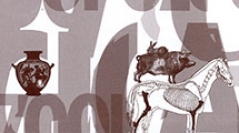

 Anthropozoologica
42 (2) - Pages 143-154
Anthropozoologica
42 (2) - Pages 143-154Culling strategies are a key issue in the analysis of pastoral economic systems. Mortality patterns have been used for reconstructing the strategies of exploitation of herds in different pastoral records, the main point being the distinction between primary and secondary productions as reflected in the age-classes of particular (or regional) bone records. Andean camelid pastoralism is no exception, and pioneering efforts have been made in constructing mortality profiles, but by using Old World models and assumptions for interpreting the information. Mixed exploitation patterns of camelid use (i.e. for meat and fiber production) is common in the Andes, and this paper presents mortality profiles resulting from this kind of economic activity, through the analysis of bone assemblages from contemporary pastoral sites in the Puna de Atacama. This case study will enable us to discuss these issues on new bases.
Mortality patterns, age-classes, South American camelids, Puna de Atacama.